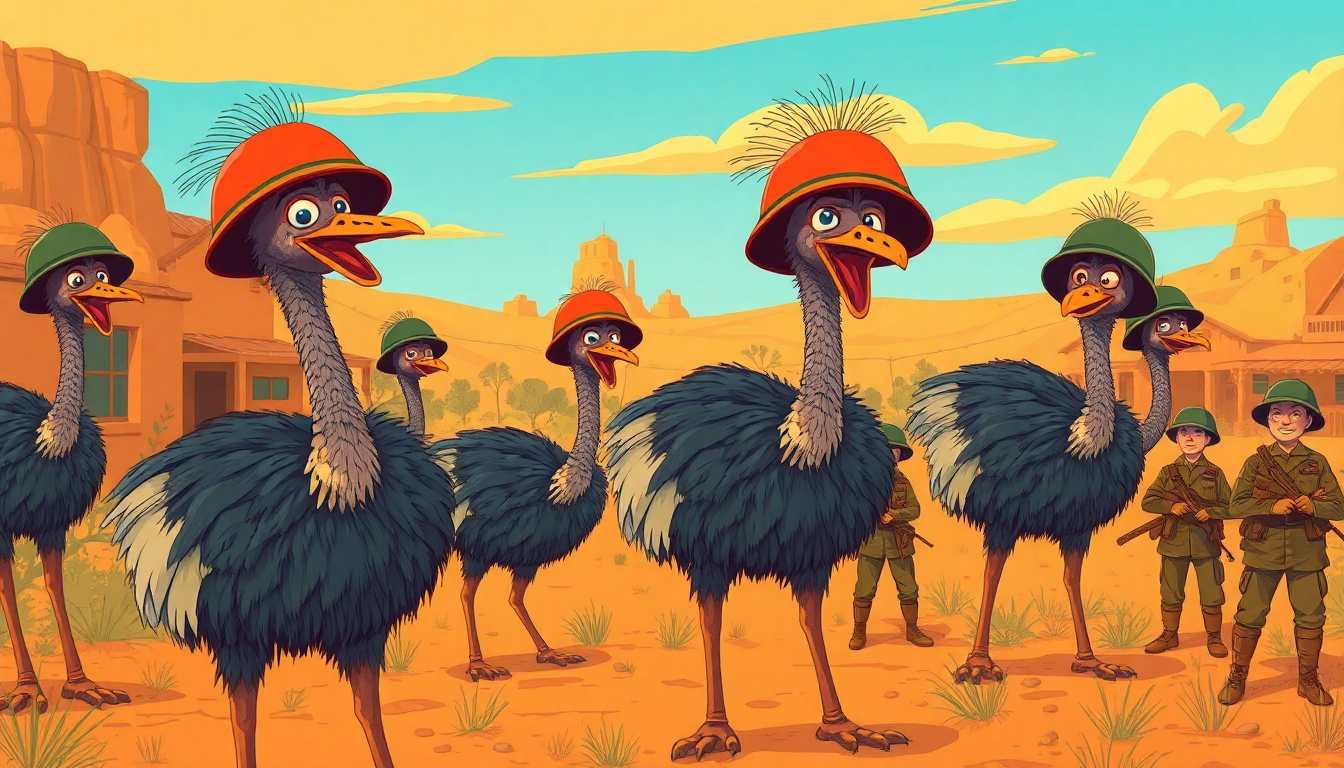The Unlikely Battlefield: Western Australia
In the annals of history, there are many odd and fascinating stories, but perhaps none are quite as bizarre as the “Great Emu War” of Australia. Yes, you read that correctly—a war involving emus. The year was 1932, the location: Western Australia, and the antagonists: farmers versus giant flightless birds.
The Prelude to Conflict
The roots of this quirky conflict trace back to the plight of Australian farmers during the Great Depression. Following World War I, the Australian government encouraged veterans to take up farming. However, the worldwide economic downturn left these farmers struggling. Adding insult to injury, a migration of about 20,000 emus passed through Western Australia searching for a place to breed. These emus found the farmers’ crops to be an all-you-can-eat buffet.
- The emus stomped through fields, creating vast swathes of destruction.
- Farmers’ fences, meant to keep out rabbits, were no match for the tall, agile birds.
- Desperation peaked as crop yields dwindled, threatening the farmers’ livelihoods.
Enter the Military
In a desperate bid to combat the marauding birds, farmers appealed to the Australian government for help. Maj. G.P.W. Meredith of the Royal Australian Artillery arrived armed with soldiers, two Lewis machine guns, and 10,000 rounds of ammunition. It seemed like an absurdly over-armed task force for dealing with birds, but the farmers were hopeful.
“If we had a military division with the bullet-carrying capacity of these birds, we could face any army in the world.” — Maj. G.P.W. Meredith
The Great Emu War Begins
The “war” began on November 2, 1932. However, just like in any true conflict, things didn’t go as planned. The initial engagement took place near Campion, but even with their machine guns, the soldiers found the birds surprisingly difficult to hit. The emus displayed guerrilla-like tactics—dividing into small groups, making them hard to target.
* Within a week, the military had used 2,500 rounds of ammunition but registered hardly any kills.
* Emus proved to be almost bulletproof, absorbing rounds and running off.
* Attempts to mount the guns on trucks led to further embarrassment, as the bumpy terrain made aiming impossible.
“The machine gunner’s dreams of point-blank fire into serried masses of emus were soon dissipated. The emus commanded the battlefield.” — The Australian House of Representatives
Retreat and Reevaluation
After days of ineffective skirmishes and a growing media circus, the army retreated. The birds had won the first round. Undeterred, Major Meredith planned another attack. This time the military focused on ambushing groups at dams where emus gathered to drink. This strategy met with middling success, but the cost of bullets per emu killed was absurdly high.
In December 1932, after another unsuccessful round of engagements where fewer than a thousand emus were felled, the operation was called off permanently.
Aftermath and Legacy
The Great Emu War lives on in popular culture as one of the most bizarre chapters in military history. It wasn’t until later that the government found an effective, if not belated, solution: bounty hunting. Farmers were provided with ammunition and instructed to shoot the emus themselves, which turned out to be more successful and cost-effective.
Despite the peculiar nature of the event, the Great Emu War had some serious implications:
- It highlighted the frustrations and struggles of post-war farmers in Australia.
- It demonstrated how wildlife can drastically impact human livelihoods.
- The incident remains a stark reminder of the sometimes futile struggle against nature.
The Birds’ Perspective
One cannot help but ponder the emus’ view of the whole episode. Typically hunted and forced from their natural habitats, the emus saw farmland as lush and abundant. They were just following their instincts for survival.
And so, the emus’ legacy lives on—not as mere birds, but as formidable foes in one of history’s most unlikely battles. For the people of Australia, the Great Emu War remains a quirky, poignant chapter of national history—a tale of determination, both human and avian, and a reminder of the often unpredictable nature of life.
